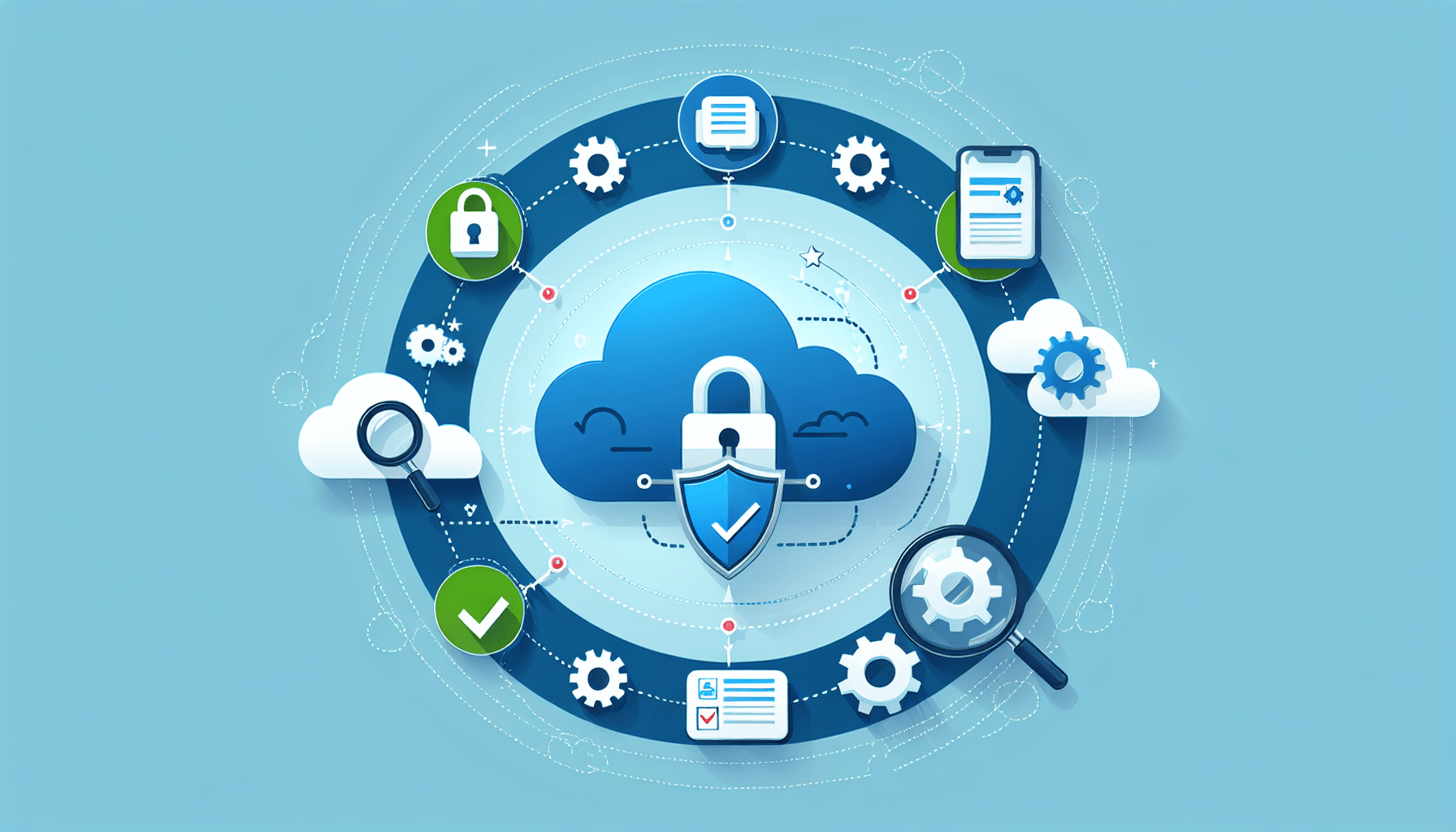In today’s increasingly digital world, cloud security assessments have become a critical component of protecting sensitive data and ensuring the overall security of an organization’s IT infrastructure. As you navigate through the complexities of cloud security, it is important to be aware of common threats and risks that may compromise the integrity of your data. By identifying and understanding these potential vulnerabilities, you can take proactive steps to mitigate security risks and safeguard your organization’s valuable information.
Common Threats And Risks To Look For In Cloud Security Assessments
When conducting cloud security assessments, it is important to be aware of the common threats and risks that could compromise the security of your cloud environment. By understanding these threats and risks, you can take proactive steps to mitigate them and ensure the safety of your data and systems. In this article, we will explore some of the most prevalent threats and risks in cloud security assessments and provide guidance on how to address them effectively.
Understanding Cloud Security Threats
Cloud security threats are constantly evolving as cybercriminals become more sophisticated in their methods. It is essential to stay up-to-date on the latest threats to ensure that your cloud environment is adequately protected.
Cloud security threats can come in various forms, including malware, phishing attacks, data breaches, and insider threats. It is crucial to have a comprehensive understanding of these threats to develop an effective security strategy.
Malware
Malware is a common threat in cloud security assessments, as cybercriminals use malicious software to gain unauthorized access to cloud systems and steal sensitive information. Malware can be introduced to the cloud environment through infected files, links, or downloads.
To mitigate the risk of malware in your cloud environment, it is essential to implement robust antivirus software, conduct regular scans for malware, and educate employees on how to recognize and avoid malware threats.
Phishing Attacks
Phishing attacks are another prevalent threat in cloud security assessments, as cybercriminals attempt to trick users into revealing sensitive information or providing access to their accounts. Phishing attacks often come in the form of fraudulent emails or websites that appear to be legitimate.
To protect against phishing attacks, it is important to implement email security measures, such as spam filters and email authentication protocols. Additionally, educating employees on how to recognize phishing attempts and report suspicious emails can help prevent these attacks from being successful.
Data Breaches
Data breaches are a significant concern in cloud security assessments, as they can result in the exposure of sensitive information and financial losses for organizations. Data breaches can occur due to vulnerabilities in cloud systems, human error, or insider threats.
To prevent data breaches in your cloud environment, it is crucial to implement encryption protocols, access controls, and monitoring tools to detect unusual activity. Regularly conducting security audits and penetration testing can also help identify and address potential vulnerabilities before they are exploited.
Insider Threats
Insider threats pose a unique risk in cloud security assessments, as employees and contractors with legitimate access to cloud systems can intentionally or unintentionally compromise security. Insider threats can involve the theft of data, sabotage of systems, or accidental exposure of sensitive information.
To mitigate insider threats in your cloud environment, it is essential to implement strict access controls, monitor user activity, and provide ongoing security training to employees. Additionally, having clear policies and procedures in place for reporting security incidents can help prevent insider threats from causing significant damage.
Assessing Cloud Security Risks
In addition to understanding the common threats in cloud security assessments, it is essential to assess the risks specific to your cloud environment. Conducting a comprehensive risk assessment can help identify potential vulnerabilities and prioritize security measures to protect your data and systems effectively.
Cloud security risks can vary depending on the type of cloud deployment (public, private, or hybrid), the sensitivity of the data stored in the cloud, and the compliance requirements of your organization. By conducting a thorough risk assessment, you can tailor your security strategy to address the most critical risks to your cloud environment.
Public Cloud Risks
Public cloud environments present unique risks due to their shared infrastructure and reliance on third-party service providers. Risks associated with public clouds include data breaches, data loss, misconfigured security settings, and compliance violations.
To mitigate risks in public cloud environments, it is essential to implement strong authentication measures, encrypt sensitive data, and regularly monitor your cloud environment for security incidents. Additionally, performing regular security assessments and audits can help ensure that your public cloud environment is secure and compliant with industry regulations.
Private Cloud Risks
While private clouds offer more control and security than public clouds, they are still susceptible to risks such as insider threats, data breaches, and configuration errors. Private clouds often store sensitive data and critical applications, making them attractive targets for cybercriminals.
To protect your private cloud environment, it is essential to implement strong access controls, encryption protocols, and intrusion detection systems. Regularly updating and patching your systems can also help prevent security vulnerabilities from being exploited.
Hybrid Cloud Risks
Hybrid cloud environments combine elements of public and private clouds, creating a unique set of security risks. Risks associated with hybrid clouds include data exposure across cloud environments, compatibility issues between cloud platforms, and challenges in monitoring and managing security controls.
To address risks in hybrid cloud environments, it is essential to implement consistent security policies and controls across all cloud platforms. Using encryption, secure APIs, and identity management solutions can help protect data as it moves between public and private cloud environments.

Best Practices for Cloud Security Assessments
In addition to understanding threats and risks in cloud security assessments, it is essential to follow best practices to ensure the effectiveness of your security strategy. By incorporating best practices into your cloud security assessments, you can enhance your security posture and minimize the likelihood of security incidents.
Conduct Regular Security Audits
Regularly conducting security audits is essential for identifying vulnerabilities, misconfigurations, and compliance issues in your cloud environment. Security audits can help you assess the effectiveness of your security controls, detect unusual activity, and address potential threats proactively.
Implement Multi-Factor Authentication
Multi-factor authentication adds an extra layer of security to your cloud environment by requiring users to provide multiple forms of identification before accessing their accounts. By implementing multi-factor authentication, you can reduce the risk of unauthorized access and strengthen your overall security posture.
Encrypt Sensitive Data
Encrypting sensitive data is crucial for protecting it from unauthorized access and data breaches. Implementing encryption protocols can help safeguard sensitive information both at rest and in transit, ensuring that it remains secure even if it falls into the wrong hands.
Monitor User Activity
Monitoring user activity in your cloud environment can help detect insider threats, unauthorized access, and other security incidents. By monitoring user activity, you can identify suspicious behavior, investigate security incidents, and take corrective action to prevent further damage.
Provide Ongoing Security Training
Educating employees on best practices for cloud security is essential for preventing security incidents and protecting your data. Providing ongoing security training can help employees recognize and report security threats, follow security policies, and understand their role in maintaining a secure cloud environment.
Conclusion
Cloud security assessments are essential for protecting your data and systems from cyber threats and risks. By understanding common threats, assessing risks, and following best practices, you can develop a robust security strategy that safeguards your organization’s assets effectively. By staying vigilant and proactive in your approach to cloud security assessments, you can minimize the likelihood of security incidents and ensure the safety and integrity of your cloud environment.




